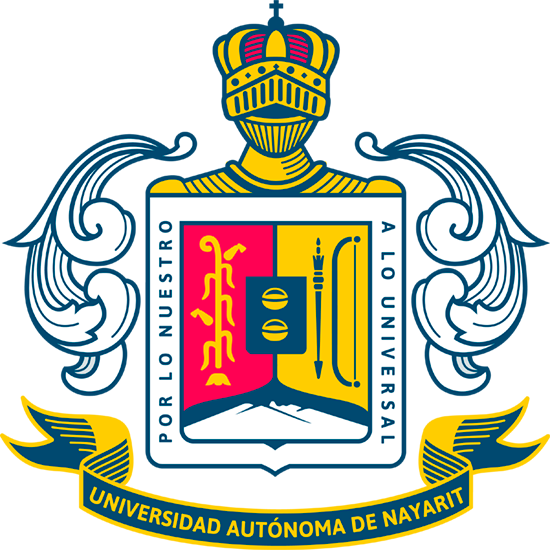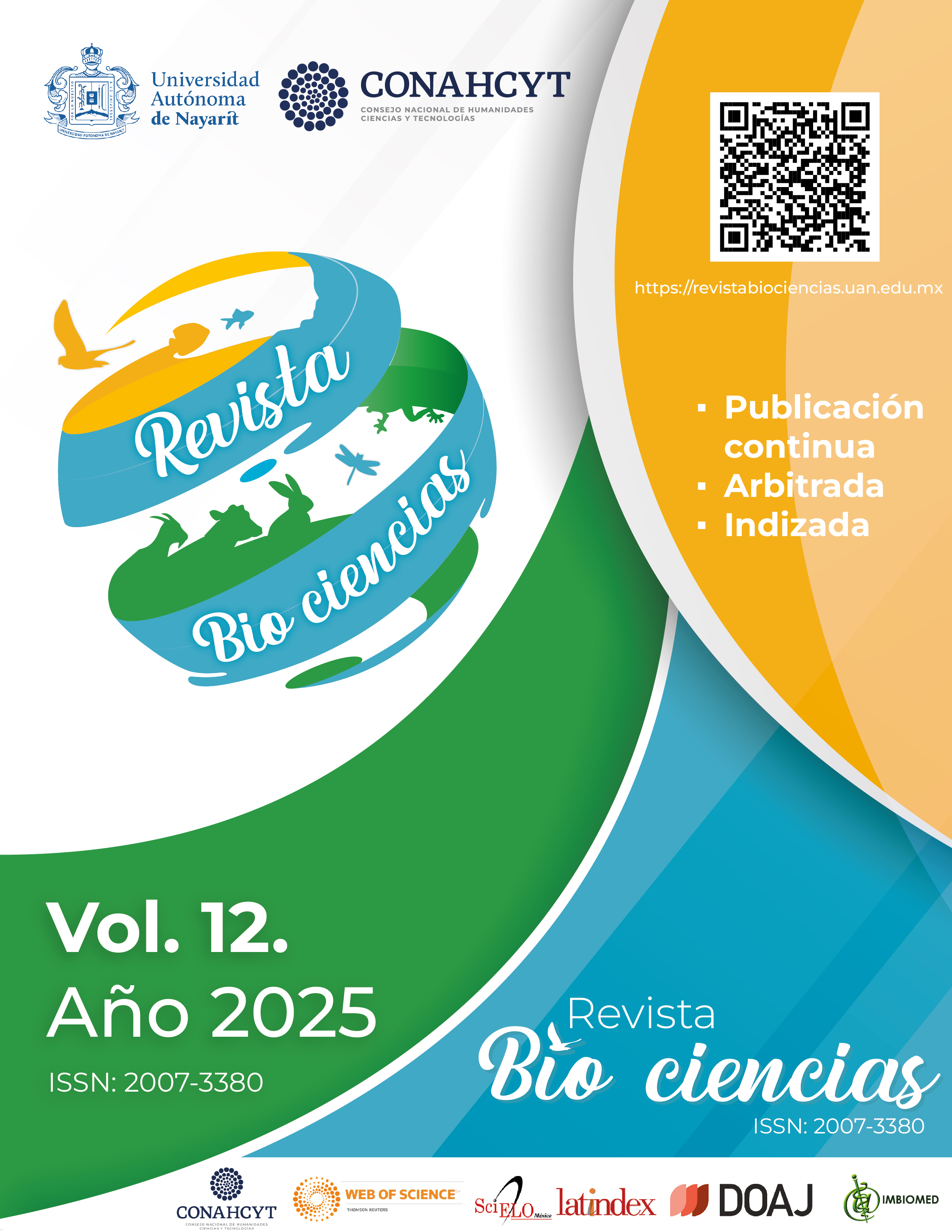Abstract
Moringa oleifera is a species with a wide global distribution due to its adaptive capacity and nutritional properties. In Mexico, there have been several reintroductions of this species and although morphological diversity has been observed, the extent of its diversity at the DNA level is unknown. The objective was to determine the diversity and genetic structure of 14 populations of M. oleifera cultivated in Mexico through SNP. The seeds were germinated in a greenhouse and DNA was extracted from young leaves and stems using a CTAB-based protocol. This DNA was used to genotype each population with DArTseqTM technology. 9,862 SNPs were obtained, of which 0.64% were polymorphic. Moderate levels of diversity were observed within the populations (Ae=1.52, He=0.33, Ho= 0.44, Shannon index = 0.44). The genetic background of the populations allowed two groups to be visualized through cluster analysis and PCoA. The genetic structure of the populations using STRUCTURE indicated that the ancestry comes from two original populations (K = 2). The 14 moringa populations are diverse at the high-quality DNA level for accurate and reliable sequencing.
References
Begna, T. (2022). Role of plant genetic diversity conservation and utilization. International Journal of Novel Research in Life Sciences, 9(1), 1-11. https://www.noveltyjournals.com/upload/paper/ROLE%20OF%20PLANT%20GENETIC-01012022-7.pdf
Botstein, D., White., R. L., Skolnick, M., & Davis, R. W. (1980). Construction of a genetic linkage map in man using restriction fragment length polymorphisms. The American Journal of Human Genetics, 32(3), 314-331.
Calicioglu, O., Flammini, A., Bracco, S., Bellù, L., & Sims, R. (2019). The future challenges of food and agriculture: an integrated analysis of trends and solutions. Sustainability, 11(1), 222. https://doi.org/10.3390/su11010222
Chang, Y., Liu, H., Liu, M., Liao, X., Sahu, S. K., Fu, Y., Song, B., Cheng, S., Kariba, R., Muthemba, S., Hendre, P. S., Mayes, S., Ho, W. K., Yssel, A. E. J., Kendabie, P., Wang, S., Li, L., Muchugi, A., Jamnadass, R., Lu, H., Peng, S., Van Deynze, A., Simons, A., Yana-Shapiro, H., Van de Peer, Y., Xu, X., Yang, H., Wang, J., & Liu, X. (2018). The draft genomes of five agriculturally important African orphan crops. GigaScience, 8(3), 1-16. https://doi.org/10.1093/gigascience/giy152
Cheng, J., Kao, H., & Dong, S. (2020). Population genetic structure and gene flow of rare and endangered Tetraena mongolica Maxim. revealed by reduced representation sequencing. BMC Plant Biology, 20(1), Article 391. https://doi.org/10.1186/s12870-020-02594-y
Centro Internacional de Mejoramiento de Maíz y Trigo [CIMMYT]. (2006). Protocolos de laboratorio: Laboratorio de Genética Molecular Aplicada del CIMMYT. (3a ed.). México, D.F. https://repository.cimmyt.org/bitstream/handle/10883/593/91224.PDF?sequence=4&isAllowed=y
Das, D., & Mishra, R. (2021). SNP markers and its impact on crop improvement. Asian Journal of Biological and Life Sciences, 10(3), 539-548. https://doi.org/10.5530/ajbls.2021.10.72
Delfini, J., Moda-Cirino, V., dos Santos Neto, J., Ruas, P.M., Sant’Ana, G.C., Gepts, P., & Gonçalves, L. S. A. (2021). Population structure, genetic diversity and genomic selection signatures among a Brazilian common bean germplasm. Scientific Reports, 11(1), 2964. https://doi.org/10.1038/s41598-021-82437-4
Dube, S. P., Sibiya, J., & Kutu, F. (2023). Genetic diversity and population structure of maize inbred lines using phenotypic traits and single nucleotide polymorphism (SNP) markers. Scientific Reports, 13(1), 17851. https://doi.org/10.1038/s41598-023-44961-3
Earl, D. A., & vonHoldt, B. M. (2012). Structure harvester: a website and program for visualizing STRUCTURE output and implementing the Evanno method. Conservation Genetics Resources, 4(2), 359–361. https://doi.org/10.1007/s12686-011-9548-7
Elbasyoni, I. S., Eltaher, S., Morsy, S., Mashaheet, A. M., Abdallah, A. M., Ali, H. G., Mariey, S. A., Baenziger, P. S., & Frels, K. (2022). Novel single-nucleotide variants for morpho-physiological traits involved in enhancing drought stress tolerance in barley. Plants, 11(22), Article 3072. https://doi.org/10.3390/plants11223072
Evanno, G., Regnaut, S., & Goudet, J. (2005). Detecting the number of clusters of individuals using the software structure: a simulation study. Molecular Ecology, 14(8), 2611–2620. https://doi.org/10.1111/j.1365-294X.2005.02553.x
Gawroński, P., Pawełkowicz, M., Tofil, K., Uszyński, G., Sharifova, S., Ahluwalia, S., Tyrka, M., Wędzony, M., Kilian, A., & Bolibok-Brągoszewska, H. (2016). DArT markers effectively target gene space in the rye genome. Frontiers in Plant Science, 7(6), 1600. https://doi.org/10.3389/fpls.2016.01600
Gouda, A. C., Warburton, M. L., Djedatin, G. L., Kpeki, S. B., Wambugu, P. W., Gnikoua, K., & Ndjiondjop, M. N. (2021). Development and validation of diagnostic SNP markers for quality control genotyping in a collection of four rice (Oryza) species. Scientific Reports, 11(1), 18617. https://doi.org/10.1038/s41598-021-97689-3
Hendre, P. S. & Van Deynze, A. (2015). How a consortium is changing Africa’s food systems? http://www.africanorphancrops.org/category/resources/blog/page/3/
Hendre, P. S., Muthemba, S., Kariba, R., Muchugi, A., Fu, Y., Chang, Y., Song, B., Liu, H., Liu, M., Liao, X., Sahu, S. K., Wang, S., Li, L., Lu, H., Peng, S., Cheng, S., Xu, X., Yang, H., Wang, J., Liu, X., Simons, A., Shapiro, H. Y., Mumm, R. H., Van Deynze, A., & Jamnadass, R. (2019). African Orphan Crops Consortium (AOCC): status of developing genomic resources for African orphan crops. Planta, 250(3), 989-1003. https://doi.org/10.1007/s00425-019-03156-9
Huster, A. R., Wallace, L. T., & Myers, J. R. (2021). Associated SNPs, Heritabilities, trait correlations, and genomic breeding values for resistance in snap beans (Phaseolus vulgaris L.) to root rot caused by Fusarium solani (Mart.) f. sp. phaseoli (Burkholder). Frontiers in Plant Science, 12(2021), 697615. https://doi.org/10.3389/fpls.2021.697615
Liu, H., Wang, Z., Zhang, Y., Li, M., Wang, T., & Su, Y. (2023). Geographic isolation and environmental heterogeneity contribute to genetic differentiation in Cephalotaxus oliveri. Ecology and Evolution, 13(3), e9869. https://doi.org/10.1002/ece3.9869
Muhl, Q. E., Toit, E. S. D., & Robbertse, P. J. (2011). Moringa oleifera (Horseradish Tree) leaf adaptation to temperature regimes. International Journal of Agriculture and Biology, 13(6), 10-21. https://www.up.ac.za/media/shared/Legacy/sitefiles/file/48/2056/31fijab1112510211024.pdf
Muli, J. K., Neondo, J. O., Kamau, P. K., Michuki, G. N., Odari, E., & Budambula, N. L. M. (2022). Genetic diversity and population structure of wild and cultivated Crotalaria species based on genotyping-by-sequencing. PLoS ONE, 17(9), e0272955. https://doi.org/10.1371/journal.pone.0272955
Nadeem, M. A., Nawaz, M. A., Shahid, M. Q., Doğan, Y., Comertpay, G., Yıldız, M., Hatipoğlu, R., Ahmad, F., Alsaleh, A., Labhane, N., Özkan, H., Chung, G., & Baloch, F. S. (2018). DNA molecular markers in plant breeding: current status and recent advancements in genomic selection and genome editing. Biotechnology & Biotechnological Equipment, 32(2), 261–285. https://doi.org/10.1080/13102818.2017.1400401
Ndhlala, A. R., & Tshabalala, T. (2023). Diversity in the nutritional values of some Moringa oleifera Lam. cultivars. Diversity, 15, 834. https://doi.org/10.3390/d15070834
Olson, M. E., & Fahey, J. W. (2011). Moringa oleifera: un árbol multiusos para las zonas tropicales seca. Revista Mexicana de Biodiversidad, 82(4), 1071-1082. https://doi.org/10.22201/ib.20078706e.2011.4.678
Ousmael, K., Whetten, R. W., Xu, Nielsen, U. B., Lamour, K., & Hansen O. K. (2023). Identification and high-throughput genotyping of single nucleotide polymorphism markers in a non-model conifer (Abies nordmanniana (Steven) Spach). Scientific Reports, 13(2023), 22488. https://doi.org/10.1038/s41598-023-49462-x
Pacheco-Gil, R. Á., Alvarado; G. Rodríguez; F., & Burgueño, J. (2016). BIO-R (Biodiversity analysis with R for Windows) Version 3.3. CIMMYT Research Data & Software Repository Network, 14. https://hdl.handle.net/11529/10820
Pasha, S. N., Shafi, K. M., Joshi, A. G., Meenakshi, I., Harini, K., Mahita, J., Sajeevan, R. S., Karpe, S. D., Ghosh, P., Nitish, S., Gandhimathi, A., Mathew, O. K., Prasanna, S. H., Malini, M., Mutt, E., Naika, M., Ravooru, N., Rao, R. M., Shingate, P. N., Sukhwal, A., Sunitha, M. S., Upadhyay, A. K., Vinekar, R. S., & Sowdhamini, R. (2020). The transcriptome enables the identification of candidate genes behind medicinal value of drumstick tree (Moringa oleifera). Genomics, 112(1), 621–628. https://doi.org/10.1016/j.ygeno.2019.04.014
Peter A. F., Wagiran, A., Rahmat Z., Yusop M. R., & Ridzuan, R. (2023). Exploring genetic variation and therapeutic properties of Moringa oleifera: progress and future potential for crop improvements. Pharmacognosy Reviews, 17(34), 426-438. https://doi.org/10.5530/phrev.2023.17.18
Pritchard, J. K., Stephens, M., & Donnelly, P. (2000). Inference of population structure using multilocus genotype data. Genetics, 155(2), 945–959. https://doi.org/10.1093/genetics/155.2.945
Raatz, B., Mukankusi, C., Lobaton, J. D., Male, A., Chisale, V., Amsalu, B., Fourie, D., Mukamuhirwa, F., Muimui, K., Mutari, B., Nchimbi-Msolla, S., Nkalubo, S., Tumsa, K., Chirwa, R., Maredia, M. K., & He, C. (2019). Analyses of African common bean (Phaseolus vulgaris L.) germplasm using a SNP fingerprinting platform: diversity, quality control and molecular breeding. Genetic Resources and Crop Evolution, 66(3), 707–722. https://doi.org/10.1007/s10722-019-00746-0
Ruiz-Hernández, R., Hernandez-Rodriguez, M., Cruz-Monterrosa, R. G., Diaz-Ramirez, M., Martinez-García, C. G., Garcia-Martinez, A., & Amor, A. A. R. (2022a). Moringa oleifera Lam.: una revisión de los factores ambientales y de manejo que influyen en el contenido nutricional de las hojas. Tropical and Subtropical Agroecosystems, 25(1), 1-15. https://doi.org/10.56369/tsaes.4053
Ruiz-Hernández, R., Hernández-Rodríguez, M., Pérez-Vázquez, A., Cruz-Monterrosa, R. G., & Rayas-Amor, A. A., (2022b). Chemical composition of twelve accessions of Moringa oleifera Lam. grown in Mexico. Agro Productividad. 15(11), 11-20. https://doi.org/10.32854/agrop.v15i10.2405
Ruiz-Hernández, R., Pérez-Vázquez, A., García-Pérez, E., Morales-Trejo, F., & Soto-Hernández, R. M. (2021). Caracterización morfológica de accesiones de Moringa oleifera provenientes del sur-sureste de México. Revista Mexicana De Ciencias Agrícolas, 12(7), 1210–2022. https://doi.org/10.29312/remexca.v12i7.2632
Ruiz-Hernández, R., Pérez-Vázquez, A., Hernández-Rodríguez, M., García-Pérez, E., Morales-Trejo, F., & Soto-Hernández, R. M. (2024). Genetic diversity of Moringa oleifera Lam. in southeastern Mexico. Agrociencia, 58(6), 1-17. https://doi.org/10.47163/agrociencia.v58i6.3101
Shyamli, P. S., Pradhan, S., Panda, M., & Parida, A. (2021). De novo whole-genome assembly of Moringa oleifera helps identify genes regulating drought stress tolerance. Frontiers in Plant Science, 12(1), 766999. https://doi.org/10.3389/fpls.2021.766999
Teklemariam, S. S., Bayissa, K. N., Matros, A., Pillen, K., Ordon, F., & Wehner, G. (2022). The genetic diversity of Ethiopian barley genotypes in relation to their geographical origin. PLoS ONE, 17(5), e0260422. https://doi.org/10.1371/journal.pone.0260422
Tian, Y., Zeng, Y., Zhang, J., Yang, C., Yan, L., Wang, X., Shi, C., Xie, J., Dai, T., Peng, L., Zeng Huan, Y., Xu, A., Huang, Y., Zhang, J., Ma, X., Dong, Y., Hao, S., & Sheng, J. (2015). High quality reference genome of drumstick tree (Moringa oleifera Lam.), a potential perennial crop. Science China Life Sciences, 58(7), 627–638. https://doi.org/10.1007/s11427-015-4872-x
Tomar, V., Dhillon, G. S., Singh, D., Singh, R. P., Poland, J., Joshi, A. K., Tiwari B. S., & Kumar, U. (2021). Elucidating SNP-based genetic diversity and population structure of advanced breeding lines of bread wheat (Triticum aestivum L.). PeerJ, 9, e11593. http://doi.org/10.7717/peerj.11593
Wu, J. C., Zhang, Y. P., Zheng, Y. X., & Peng, X. M. (2018). Pollen mediated gene flow in a small experimental population of Moringa oleifera Lam. (Moringaceae). Industrial Crops and Products, 117(1), 28-33. https://doi.org/10.1016/j.indcrop.2018.02.077
Yirgu, M., Kebede, M., Feyissa, T., Lakew, B., Woldeyohannes, A. B. & Fikere, M. (2023). Single nucleotide polymorphism (SNP) markers for genetic diversity and population structure study in Ethiopian barley (Hordeum vulgare L.) germplasm. BMC Genomic Data, 24(1), 7. https://doi.org/10.1186/s12863-023-01109-6
Zhang, H., Mittal, N., Leamy, L. J., Barazani, O., & Song, B. H. (2017). Back into the wild-apply untapped genetic diversity of wild relatives for crop improvement. Evolutionary Applications, 10(1), 5-24. https://doi.org/10.1111/eva.12434
Zhang, J., Yang, E., He, Q., Lin, M., Zhou, W., Pian, R., & Chen, X. (2019). Genome-wide analysis of the WRKY gene family in drumstick (Moringa oleifera Lam.). PeerJ, 7(1), e7063. https://doi.org/10.7717/peerj.7063

Revista Bio Ciencias by Universidad Autónoma de Nayarit under Creative Commons Attribution-NonCommercial 3.0 Unported License.
Based on work of http://biociencias.uan.edu.mx/.
Further permits not covered by this licence can be found at http://editorial.uan.edu.mx/index.php/BIOCIENCIAS.






